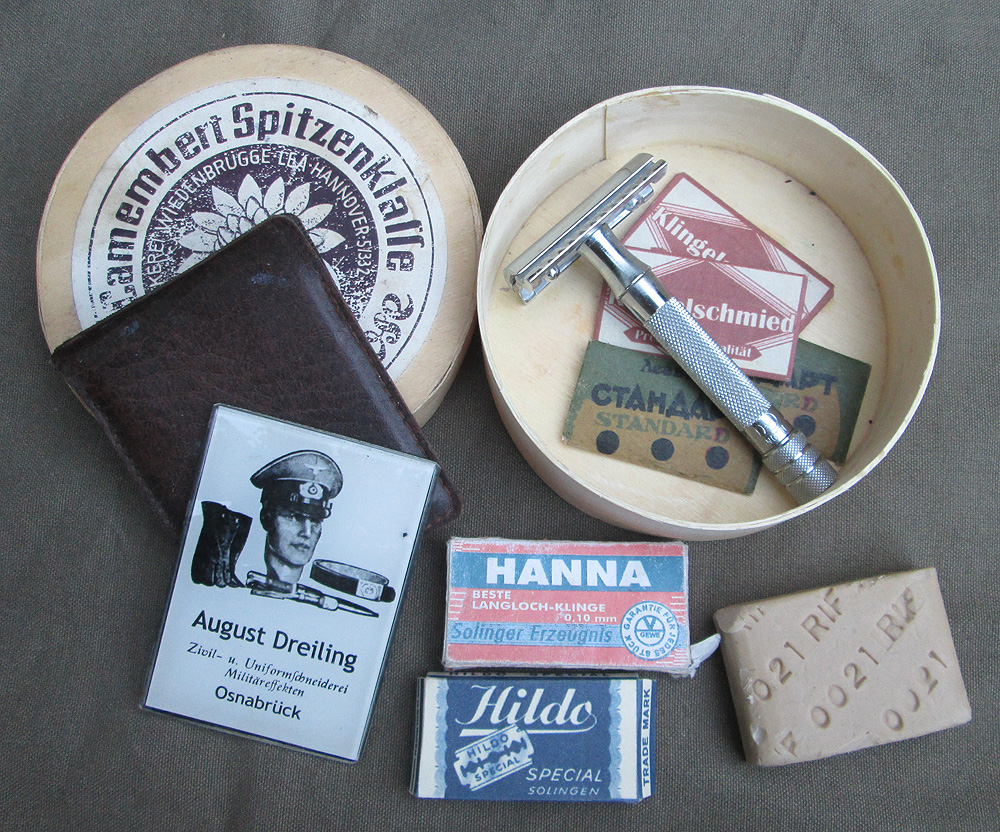What kind of razors were German soldiers issued in WWII? It’s a trick question. Soldiers had to supply their own razors. They could bring them or have them sent from home, or they could buy razors- but the razors made available to them to buy were the same commercial products available to civilians. Many dealers will offer “Wehrmacht issue” razors, this is an inaccurate sales pitch as there simply never was any such thing. Purportedly original razor packaging that says “Wehrmacht Rasierapparat” or “Einheitsrasierapparate für Heereslazarette” is, simply, fake. Shaving soap was issued; razors were not. Soldiers in Germany and in occupied countries, civilians, even concentration camp inmates all used the same razors.
Here are three razors that were actually used by German soldiers during WWII. All three were excavated from remains of former German positions. Two are brass that once had a silver-colored plating, now mostly gone after decades underground. The Bakelite razor is marked “Made in France.” None are marked with a brand name.

Here are some other period type Bakelite razors. One is also made in France, as was the excavated example; the others are German. None of the German ones are marked.

Razors like these were available complete with Bakelite cases, but most were sold in simple cardboard boxes which would presumably be discarded.

The “Apollo” brand razor shown above is still marked with the original price- 1.50 Reichsmarks. That’s about ten US dollars today.
An interesting type of wartime-era German Bakelite razor is the “slant.” The top part of the razor was not exactly perpendicular to the handle, but was set as an angle. This was advertised as a feature that supposedly yielded better results than the usual type. The degree of slant varied, as you can see. The example at left was made by Merkur.

Just as with standard Bakelite razors, these were sold with matching Bakelite cases, or in cardboard boxes.

I have seen it stated elsewhere that all WWII German produced razors were Bakelite as metal was reserved exclusively for strategic purposes. That’s not true. Here is a selection of wartime type metal razors. Most are made from a zinc alloy sometimes referred to as “Kriegsmetall”- war metal.

Below: a plated zinc razor in its original box.

Razors were also available in various types of travel kits. Shown here, a leatherette case, circa 1930s, and a collapsible razor in a tiny metal box, exact vintage unknown.

Inside:

One particular type of razor that seems to have been widely used by soldiers and civilians alike during and before WWII was the Mond-Extra, made by Rotbart. Rotbart was a German company that was bought by Gillette in 1926. Gillette had invented the classic type double-edge safety razor in 1903 and from that time through the 1920s, many were exported to Germany; Wehrmacht soldiers used these Gillette razors, too. After Gillette bought Rotbart, they made the Mond-Extra as a copy of the classic Gillette single-ring safety razor that had been introduced in 1907, with some slight changes over time. Here is an early Mond-Extra on the left, a 1907 USA-made Gillette razor on the right. The Gillette version was made until 1921.
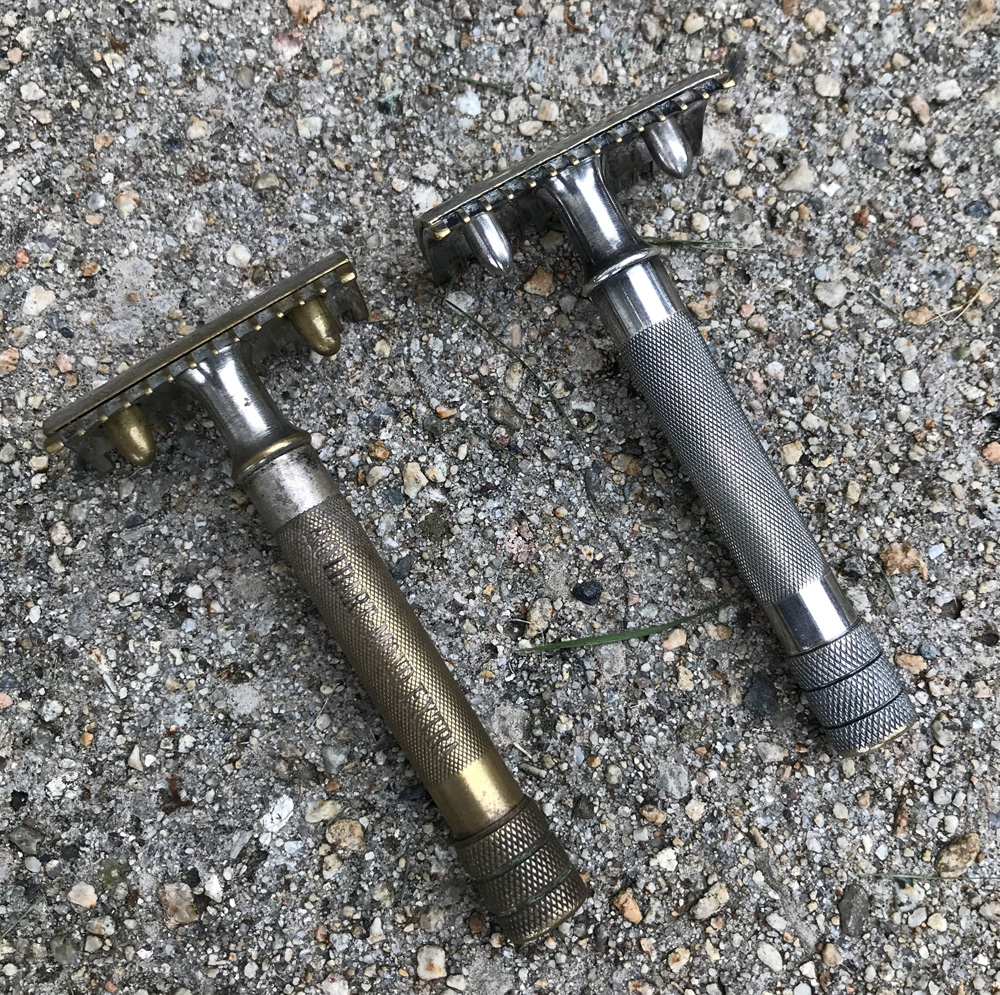
In addition to owning Rotbart, Gillette had its own presence in Third Reich Germany. This envelope was sent from the German Gillette company to Gillette world headquarters in the USA, in 1941. The German postmark advertises Gillette blades; these were no doubt marketed to the German domestic market.
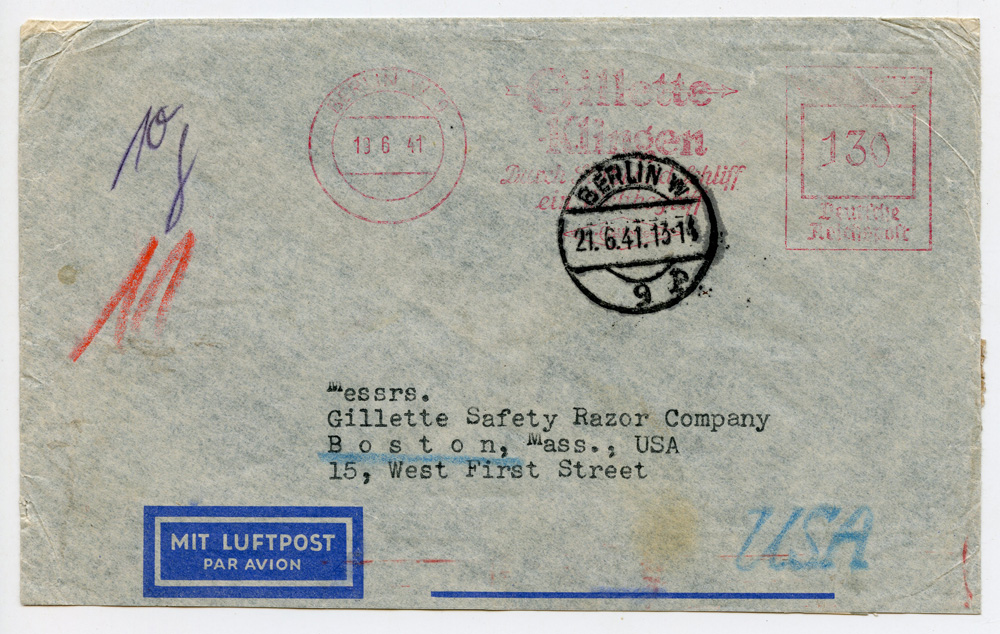

Here are two pre-1945 versions of the Mond-Extra that were made a bit later than the type shown above. They are made of plated brass.
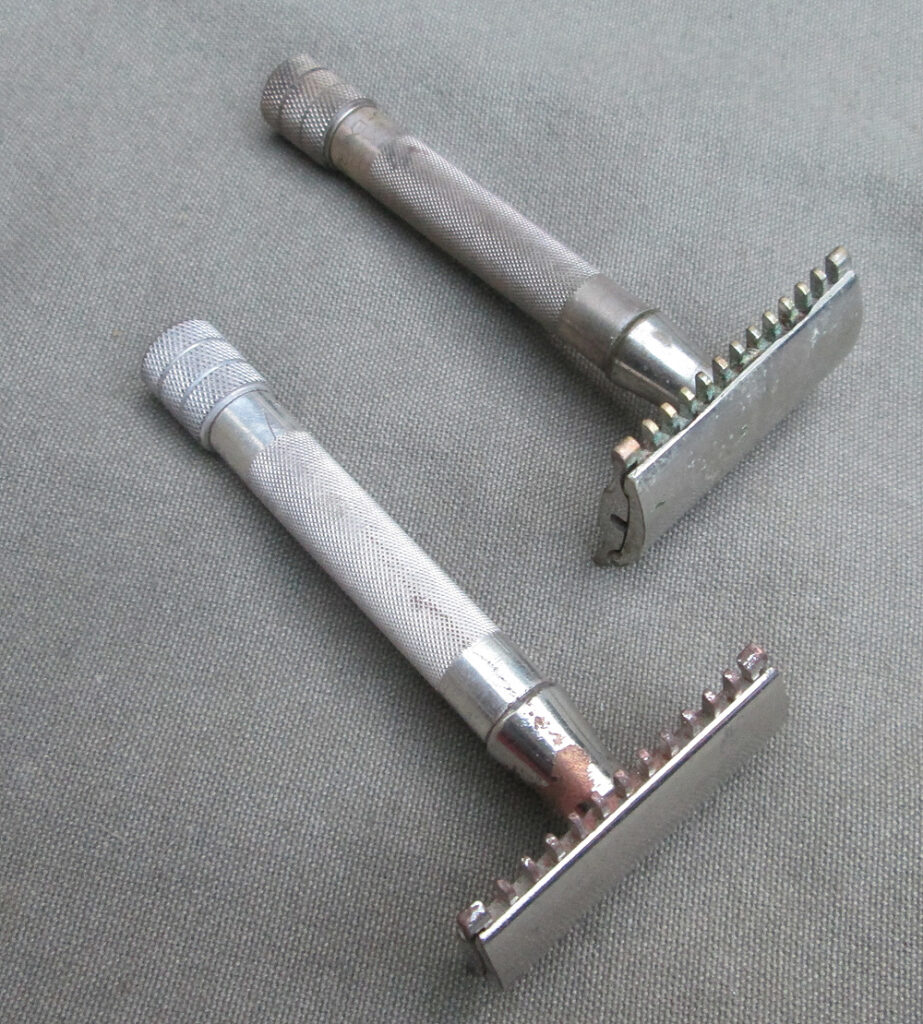
Rotbart advertised heavily in publications intended for soldiers. Here is an ad for razor blades in a 1940 issue of the German armed forces magazine “Die Wehrmacht.”
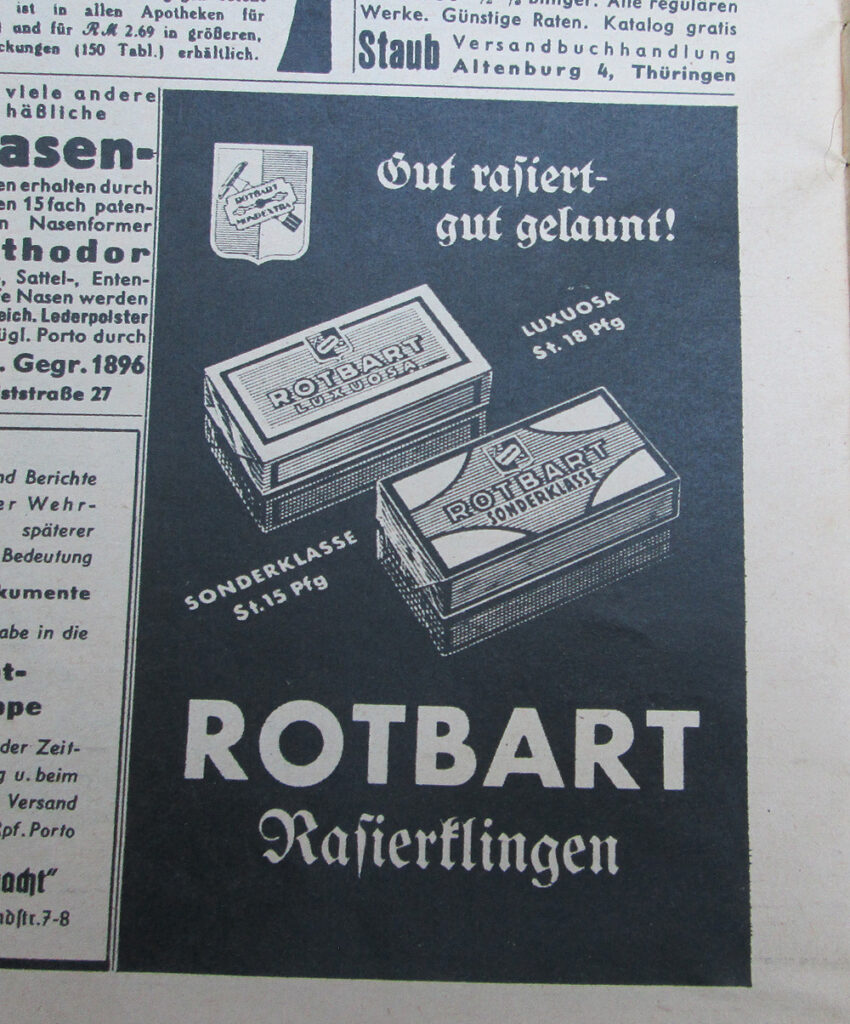
The Rotbart Mond-Extra razor was available in a cardboard box, an enameled tin box, or a Bakelite case.

Rotbart also made various types of travel kits for razors including the Mond-Extra.

The leather case opens to reveal a razor, Bakelite tubes for a shaving brush and shaving soap, and a booklet about how to shave. There is even a mirror inside the lid. This kit is vintage 1930s.

A German soldier could have used any of these types of razors depending on personal preference or availability. Double edged safety razors in the same style are still made in Germany today by Merkur, one of the companies that was making razors before and during the war. Here are two modern Merkur products: the Merkur 45, made of Bakelite, and the Merkur 33c, made of plated brass. The Merkur 33c is still available. As of this writing (2021), the Bakelite version seems to have been recently discontinued.
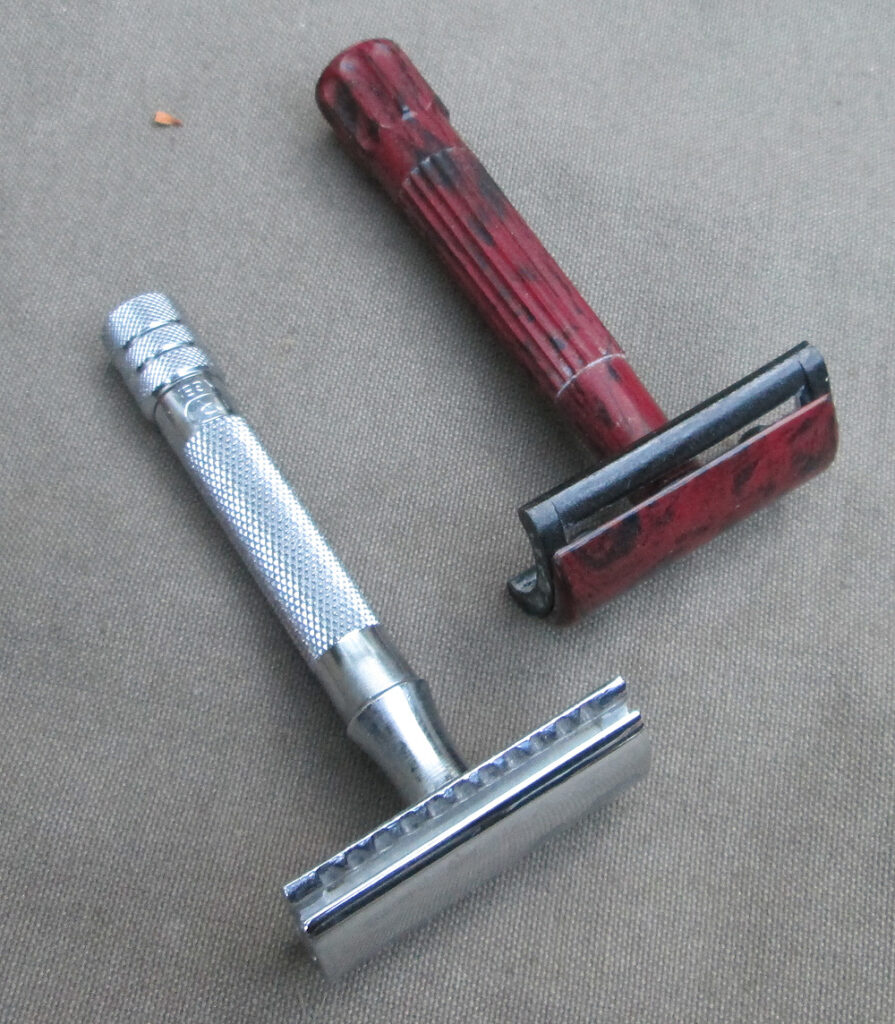
The similarity between the modern Merkur 33c and the Rotbart Mond-Extra (and the 1907 pattern Gillette razor, that it was a copy of) is remarkable and certainly not a coincidence. This is a classic, useful design.

The Merkur 45 Bakelite razor also fits in nicely with its WWII-period counterparts.

The modern Merkur 33c still in production and widely available as of this writing. They retail for around $35 and are great razors for shaving.
Of course, a decent shave requires more than a razor alone. German soldiers were issued soap to shave with. The shaving soap sticks were rectangular and each bar was stamped with a code assigned by the “Reichsstelle für industrielle Fettversorgung.” Here is an original package of 10 bars of issue type shaving soap.


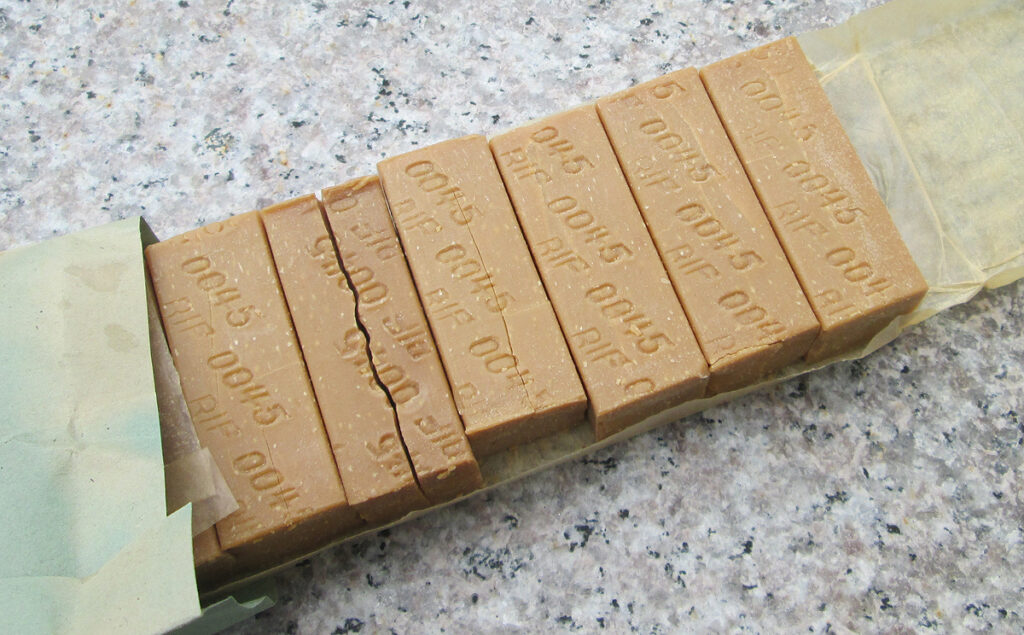
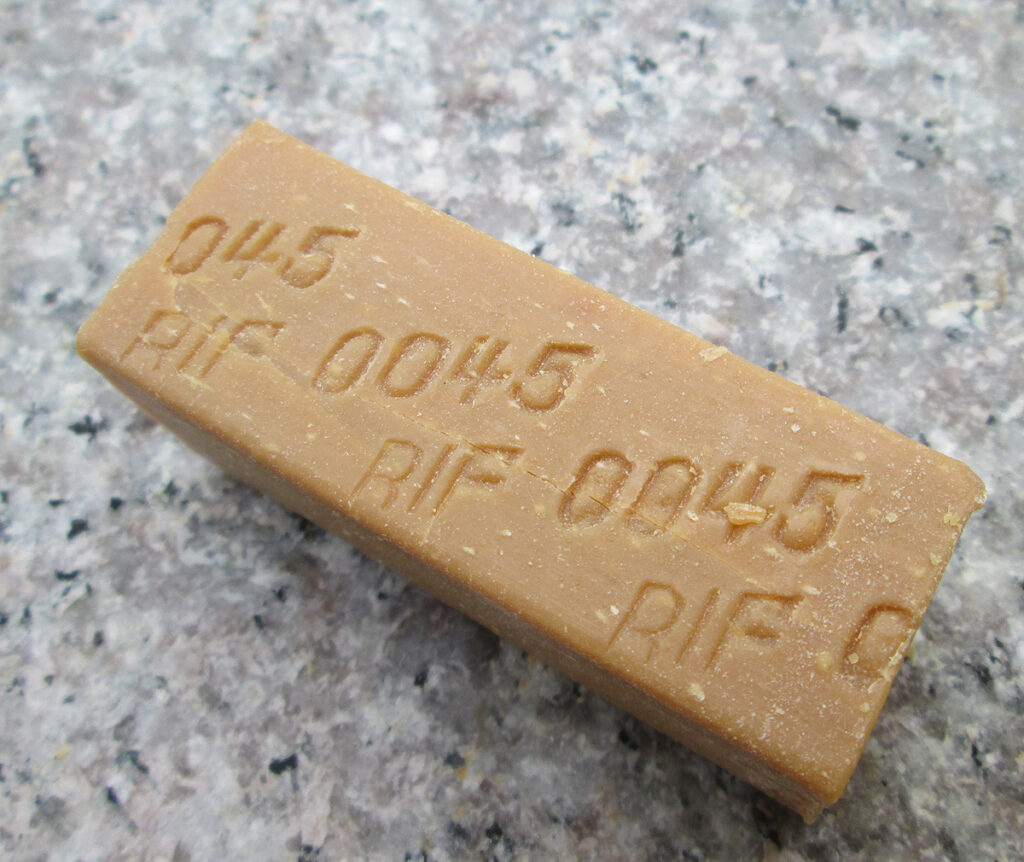
These ceramic hones were used to sharpen razor blades to prolong their life. These were excavated from former German positions on what was once the Eastern Front. These would have been private purchase rather than issue items.

Soldiers in the field also had to fend for themselves when it came to shaving mirrors. Here, a soldier shaves with a small, round pocket mirror.

Here is a selection of wartime era pocket mirrors with military themes.

With some creativity, it is not hard to put together a convincing representation of a WWII German soldier’s shaving kit using modern items, that can actually be used today. Shown below is a careful recreation of a kit that could have been used by a soldier in the field. The razor is a modern Merkur 33c, everything else is reproduction- the shaving mirror and leatherette case, the RIF-marked soap bar, the razor blade packaging. All fits inside a wooden box with a reproduction Camembert cheese label.
